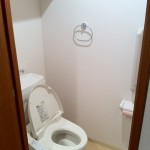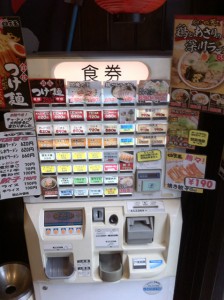Not speaking the language (still, I know) forces you to learn how to respond in particular situations…
If I’m buying something at the supermarket and they start speaking to me, they are probably asking if I want a bag with that. I can either shake my head, do a hand wave signifying no, or respond with ふくろいりません (fukuro irimasen), meaning “I don’t need a bag”. I actually took the time to learn this phrase because they over-bag in Japan. They put everything in bags! You buy a stick of gum, they put it in a bag. You buy a bag of chips, they put it in a bag. My apartment was filled with plastic bags! So I learned to say ふくろいりません.
If I’m at a store and I pay with a credit card, they may ask me a question, accompanied with a hand gesture indicating a one or two. They are asking if I want to swipe my credit card once or twice. This one took me a while to figure out. I used to just say yes, but that confused them. After talking to some of my Japanese friends, I learned to say, one swipe. I’m not really sure why you would pay with two swipes, maybe there is a transaction limit on Japanese credit cards. One of the mysteries of Japan…
If you are on the train and all of the sudden everyone gets off. Get off too! I’ve actually not noticed everyone getting off before, or thought, “that’s weird, everyone in this car needed to get off at this stop”. At this point a Japanese man rushed up to me and gestured to get off the train. Since then, I’ve learned that when everyone gets off the train, it means that they are switching trains and you have to walk across the platform to another train. Just follow the people, a philosophy I use a lot here.


